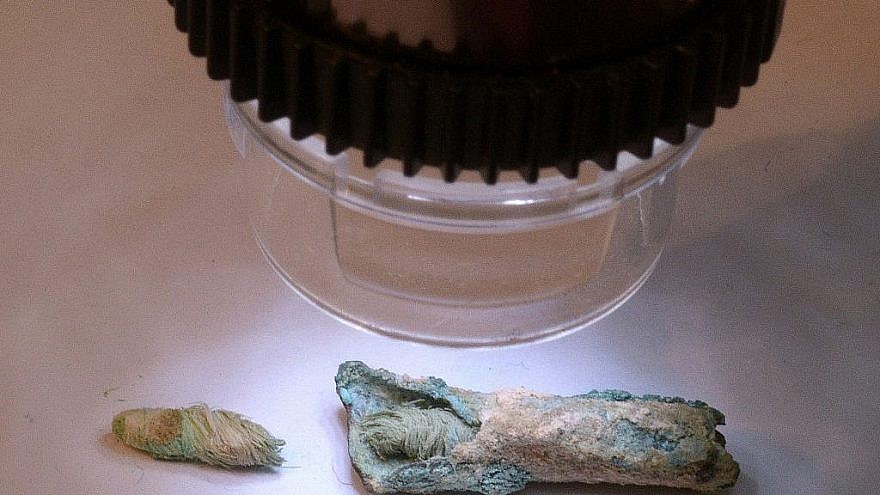A unique lamp wick dating back to the Byzantine period was uncovered by the Antiquities Authority at the Negev Desert Roman Empire settlement of Shivta, according to an announcement on the last day of Hanukkah, the festival in which candles are lit for eight consecutive nights.
Just a few centimeters long, the wick is estimated to be 1,500 years old and is being examined by the Antiquities Authority. According to archaeologist Dr. Naama Sukenik, the wick, which is confirmed to have been made of linen, managed to survive due to the dry climate of the Negev.
The town of Shivta (also known as Subeita) was populated by Christians during the Roman and Byzantine periods. It is believed to have been a stop for Nabatean spice trades until the region was conquered by the Romans in 106 C.E. and transformed into wealthy towns with churches.
The excavation of Shivta began under Harris Dunscombe Colt in the 1930s—leader of the American Colt expedition, but was been renewed by the University of Haifa in 2015 under Professor Guy Bar-Oz and Dr. Yotam Tepper.
The Colt team erected a stone-housing edifice out of large blocks taken from the ruins of Shivta, which now house a family that operates a bed-and-breakfast from the site.
The adjacent Shivta national park is open to visitors, who can see ancient churches, government edifices and other buildings. While the excavation has managed to uncover many of the large structures, complete with stone etchings and even mosaics, a significant part of the site still lays in ruin and has not yet been excavated.
“The Mishnah, tractate Shabbat, discusses what materials may and may not be used as wicks to light Shabbat lamps,” Sukenik said in a statement. “There, too, linen is mentioned as a high-quality material for wicks because it burns long and beautifully.” The ancient residents of Shivta were Christians, but linen was a common material for wick-making at the time.
According to the archaeologists, the use of linen wicks in a location where flax does not grow indicates that the linen or the wicks themselves were likely imported.
The wick, and additional objects recovered from the Colt expedition at Shivta, will be on display for the public at the Hecht Museum in Haifa beginning Jan. 24.























